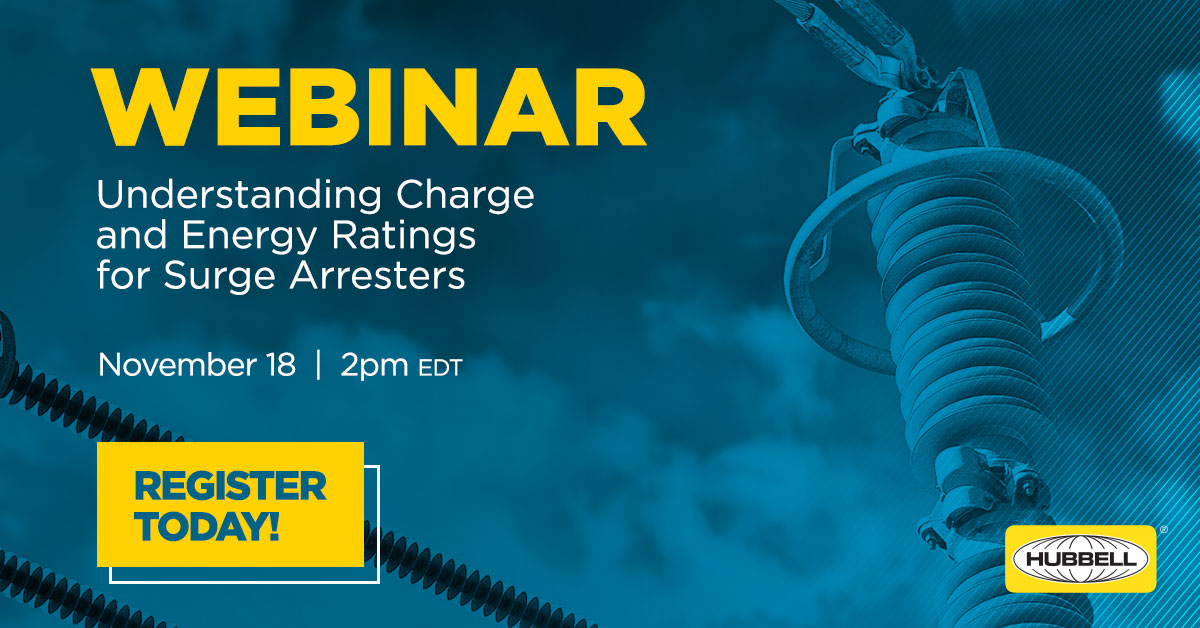High voltage surge arresters are continually subjected to factors that could ultimately degrade the device. These include system overvoltages, switching surges, lightning strikes, environmental contamination, damaging UV exposure, and more. If not properly sized, an arrester won’t just have diminished performance, it will fail.
The IEEE and IEC arrester standards involve a series of tests that overstress arrester designs to ensure their longevity in the field. These tests include quantifying the amount of energy an arrester can dissipate while remaining functional. These tests are recent, introduced to IEEE C62.11 in 2012 and IEC 60099-4 in 2014. The IEEE standard also revised the energy ratings for distribution and station arresters in the 2020 edition.
Switching Surge Energy Rating, Wth
Substation and intermediate arresters commonly encounter switching surge impulses during their lifespan, as opposed to the lightning duty expected for distribution and line arresters. Understanding and quantifying the amount of energy the product can dissipate will help ensure a long service life. These arresters can be characterized by their switching surge energy rating. This rating or energy capability of a surge arrester is the amount of switching surge energy (typically in kilojoules) that it can absorb or dissipate, while remaining thermally stable. This ensures the arrester can dispel the significant heat generated during a long magnitude switching surge.
The switching surge energy rating test verifies the product is capable of handling multiple switching surge discharges. The capability is expressed in kJ/kV of MCOV or kJ/kV of Ur depending on the applicable standard (IEEE or IEC). This rating is not applicable to distribution type arresters. Find a more extensive discussion of switching surge energy rating in our application guide.
IEEE C62.22 provides equations to quantify the energy created, based on the application. Once the energy is quantified, it can then be compared to the energy handling capability of an arrester. The rating should always exceed the expected energy created during a switching event. If the arrester energy rating is insufficient, you should specify a higher energy class arrester.
Thermal Charge Transfer Rating, Qth
Distribution arresters are more commonly exposed to charge transfer attributed to lightning strikes or temporary overvoltages. Studies show that the total charge content is a more important consideration than the number of impulses. The 2020 version of IEEE C62.11 introduced the Operating Duty test to better address distribution applications.
Distribution arresters are classified by a thermal charge transfer rating, Qth. The important consideration in this test is the thermal recovery aspect. It ensures the arrester remains serviceable and is not influenced by possible electrical aging. The charge rating can be quantified using a lightning study. The resulting Coulomb (C) rating is then compared to the arrester capability.
Single Impulse Charge Transfer Rating, Qrs
All arresters can also be characterized by their impulse transfer capability. This test determines the maximum charge an arrester can transfer in multiple instances without physical damage occurring. The capability is expressed in Coulombs. This test distinctly differs from Wth and Qth testing because thermal recovery is not required. It ensures the MOV is rated based on its charge conduction capability, without an impact from discharge voltage. This prevents manufacturers from making an arrester with a higher discharge voltage with the same impulse current charge capability, to claim a higher energy dissipating capability. This can easily be misunderstood as better energy capability when in fact it is not.
The IEEE standard defines minimum Qrs ratings for Heavy Duty and Normal Duty class arresters. There is no minimum Qrs rating for station and intermediate arresters. To apply the manufacturer published Qrs rating, a transient study is generally required. This helps predict the charge an arrester will see in service and can be compared to the capability of the chosen arrester. Like the other ratings, the charge rating of an arrester should always exceed the charge an arrester will see in service.
Register for our webinar to learn more
Be sure to join our upcoming webinar Understanding Charge and Energy Ratings for Surge Arresters to learn more about this topic. Register here.
If you need help understanding the revised IEEE tests or selecting an appropriate arrester for your application, please contact your local Hubbell representative for additional support.

